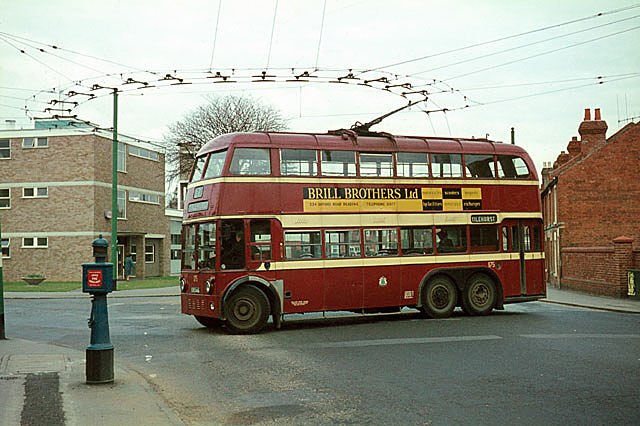Trolleybuses in San Francisco
The San Francisco trolleybus system forms part of the public transportation network serving San Francisco, in the state of California, United States. Opened on October 6, 1935, it presently comprises 15 lines and is operated by the San Francisco Municipal Railway, commonly known as Muni, with around 300 trolleybuses. In San Francisco, these vehicles are also known as "trolley coaches", a term that was the most common name for trolleybuses in the United States in the middle decades of the 20th century. In 2023, the system had a ridership of 42,240,000, or about 132,300 per weekday as of the fourth quarter of 2023.
An XT60 trolleybus on route 5-Fulton in December 2017
Preserved Muni trolleybus 776 photographed in 2012 at Market and Clayton on the original No. 33 trolleybus route established by Market Street Railway in 1935.
Muni trolleybus wires at McAllister & Divisadero Streets.
ETI 14TrSF trolleybus climbs Nob Hill along Sacramento near Powell in 2007, a 17% grade
A trolleybus is an electric bus that draws power from dual overhead wires using spring-loaded trolley poles. Two wires, and two trolley poles, are required to complete the electrical circuit. This differs from a tram or streetcar, which normally uses the track as the return path, needing only one wire and one pole. They are also distinct from other kinds of electric buses, which usually rely on batteries. Power is most commonly supplied as 600-volt direct current, but there are exceptions.
Busscar trolleybus in São Paulo, Brazil
Solaris trolleybus in Landskrona, Sweden
The "Elektromote", the world's first trolleybus, in Berlin, Germany, 1882
A double-deck trolleybus in Reading, England, 1966








